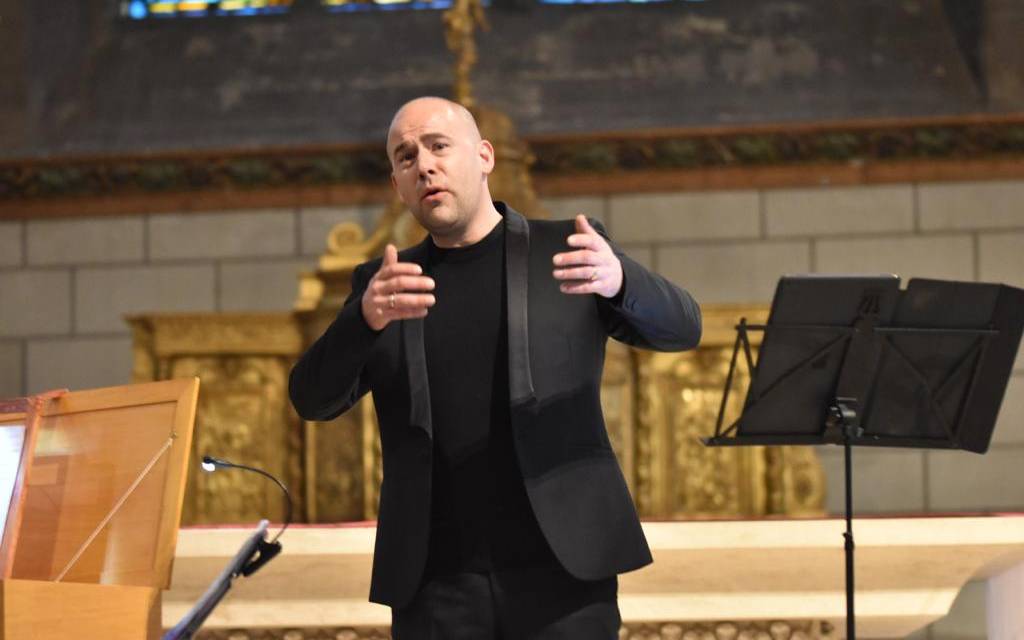It’s safe to say there aren’t a huge number of countertenors around. The rarest of voice types, it is sometimes described as a man singing like a woman. But the reality is much more complex than that.
Countertenor is a male voice of unusually high range, broadly equivalent to a female contralto or mezzo-soprano. In terms of pitch notation, it generally extends from around G3 to D5 or E5, that is from the note G one octave below middle C (or C4) up to the D or E an octave above middle C.
It isn’t a ‘natural’ voice and countertenors are often baritones or tenors; British countertenor Iestyn Davies is a bass. The high notes are generally achieved through the use of the falsetto voice, the vocal register occupying the range just above the modal voice. The latter might be described as the natural singing voice, the one used most frequently in speech and singing.
Singing countertenor is a conscious decision – the performer must train to use his falsetto voice, which is usually quieter and softer in tone than the main voice, in order to produce a powerful sound. A countertenor will rarely sing in his modal voice as doing so will weaken the falsetto mechanism, leading to a weaker sound.
Many of the roles for this voice type were written for the castrati. This poses problems for the modern singer. The (illegal) act of castrating prepubescent boys led to some dramatic physical differences in their adult bodies, including underdeveloped vocal chords, abnormally long limbs and unusually large rib cages. Such differences gave these men unique voices that can’t be replicated today.
Today’s countertenors may share the same vocal range as the castrati of old, but they don’t have the same physical attributes. They might be able to hit the same notes, but without the big lung capacity, they can’t sing the same long phrases. Despite this, the rise of the countertenor during the 20th century was largely due to a renewed interest in the Baroque operas of composers such as Purcell and Handel.
In addition to the castrato voice, countertenor can be subdivided into two further types: the sopranist, or male soprano, and the haute-contre. The latter is a high tenor and was predominant in French opera from the middle of the 17th century until the latter part of the 18th (the castrati were much less popular in France than the rest of Europe). Unlike most countertenors these singers used their modal voice.
The sopranist, as the name implies, can sing in the same vocal range as a female soprano. This is usually achieved using falsetto, although in very rare cases adult men can sing in the soprano range using their modal voice. This might be because the vocal chords didn’t develop fully, as in the case of Michael Maniaci, or endocrinological reasons as with Radu Marian.
As the castrati fell out of favour from the late 18th century, so the popularity of the countertenor waned. However, the second half of the 20th century saw a renewed interest in the voice type. This is partly due to Alfred Deller, an English singer and champion of authentic early music performance, as well as a more general revival of Baroque opera, and the attendant need for male singers to perform the castrati roles in such works.
Benjamin Britten’s A Midsummer Night’s Dream, which premiered at the Aldeburgh Festival in 1960, posed a challenge to normative gender ideas of the 1960s. He wrote the role of Oberon specifically for Deller, the ethereal quality of the singer’s voice conveying the fey quality of the composer’s lead character.
The voice type remains popular in the modern era, with many contemporary composers writing for it. Philip Glass’s Akhnaten (1984), with the titular role written for countertenor, is one example. The continued interest in early operas also guarantees a decent amount of work for these vocalists.
Sung well, countertenor is an extraordinarily complex and beautiful sound. Long may it remain in favour!
Image
Mathieu Salama is a French countertenor who specialises in Baroque operas (Mathieu Salama via Wikimedia Commons).

